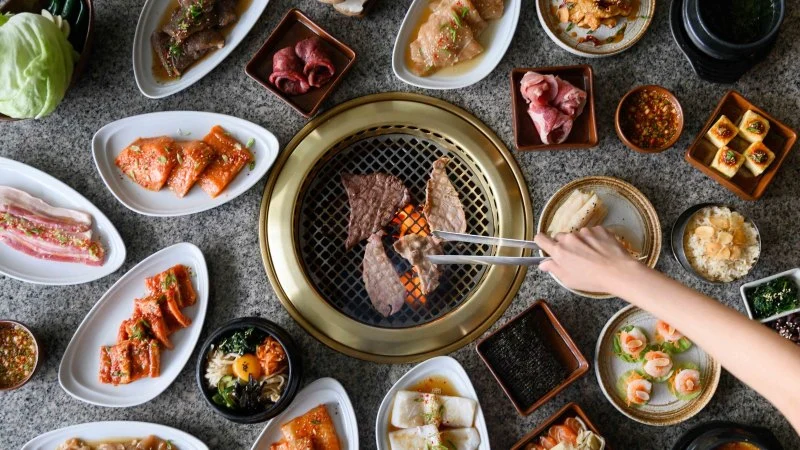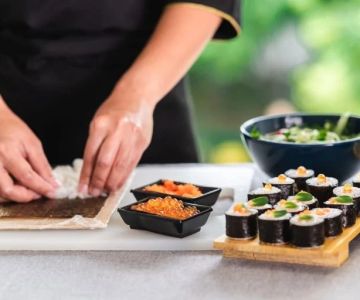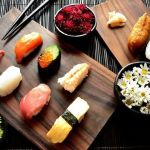
- The Global Rise of Korean Restaurants
- Korean Cuisine: A Flavor Explosion
- How Korean Food Culture is Shaping Dining Trends
- The International Influence of Korean Dining
- Real-Life Examples of Korean Restaurants Impacting Global Dining
- The Future of Korean Cuisine in Global Dining
The Global Rise of Korean Restaurants
In recent years, Korean restaurants have gained significant popularity worldwide, influencing global dining trends in ways few other cuisines have. From kimchi to Korean barbecue, the bold flavors and unique dining experiences offered by Korean eateries are attracting food lovers across the globe. What once seemed like an exotic cuisine is now being embraced by a broad range of diners, from food critics to casual enthusiasts. This surge in popularity has also brought Korean food into the mainstream, influencing everything from restaurant menus to food festivals and even home cooking.
Korean Cuisine: A Flavor Explosion
At the heart of Korean cuisine is a distinctive combination of flavors that sets it apart from other global culinary traditions. From the tangy heat of gochujang (fermented chili paste) to the savory umami of fermented foods like kimchi, Korean food is a sensory adventure. The balance of spicy, sweet, salty, and sour creates a harmonious dining experience that has resonated with food lovers around the world.
1. Bold and Spicy Flavors
One of the most defining characteristics of Korean food is its boldness. Ingredients like gochugaru (Korean red pepper flakes) and gochujang give Korean dishes their signature heat. Whether in dishes like bibimbap (a rice bowl topped with vegetables, egg, and spicy gochujang) or spicy Korean fried chicken, the heat is both welcoming and invigorating, making it an appealing choice for adventurous eaters.
2. Fermented Foods
Kimchi, Korea’s iconic fermented vegetable dish, has become a staple in kitchens worldwide. Fermented foods are known for their health benefits, and as awareness of probiotics grows, so does the appeal of dishes like kimchi, doenjang (fermented soybean paste), and jeotgal (fermented seafood). These ingredients not only add complexity and depth to Korean dishes but also contribute to a growing interest in fermented foods in global culinary trends.
How Korean Food Culture is Shaping Dining Trends
It’s not just the food itself but also the culture surrounding Korean dining that has made a lasting impact on global trends. Korean food culture emphasizes community, shared meals, and interactive dining experiences, which are becoming more common in restaurants worldwide.
1. Korean Barbecue: A Social Dining Experience
Korean barbecue, or gogigui, is a prime example of how the dining experience is an integral part of Korean food culture. In this style of dining, guests grill their own meat at the table, creating a fun, interactive experience. This communal style of eating encourages conversation and connection, making it a popular choice in restaurants and social gatherings worldwide. Many international restaurants have adapted this format, introducing Korean barbecue to non-Korean diners.
2. Emphasis on Variety: Banchan
Another element of Korean dining that has influenced global dining is the practice of serving multiple side dishes, or banchan, alongside a main dish. These small plates, which range from pickled vegetables to pancakes and stews, offer a variety of textures and flavors that make every meal exciting. This concept of variety is now being incorporated into other cuisines and restaurant formats globally, where diners can enjoy multiple small plates of food in one sitting.
The International Influence of Korean Dining
Korean food’s global influence can be seen in the rise of Korean-inspired dishes and restaurants around the world. This impact is not only felt in major food capitals like New York and Los Angeles but also in cities across Europe, Asia, and beyond. Korean ingredients and cooking techniques are being integrated into various culinary traditions, with chefs experimenting to create new and exciting fusions.
1. Korean Fusion Cuisine
Korean fusion cuisine has become a buzzword in the culinary world. From Korean tacos to kimchi burgers, chefs are blending Korean ingredients with dishes from other cultures to create innovative, hybrid experiences. The fusion of Korean and American flavors, for example, is particularly popular in the street food scene, where Korean barbecue and kimchi are used as toppings or incorporated into classic American dishes like pizza or sandwiches.
2. Korean-Inspired Fast Food
Fast food chains are also catching on to the Korean food trend. International fast food brands are adding Korean-inspired items to their menus. For example, fried chicken joints now offer spicy Korean fried chicken wings, and even fast-casual burger chains are incorporating kimchi into their burgers. This demonstrates how Korean food has moved from niche markets to mainstream dining, influencing fast food and casual dining chains alike.
Real-Life Examples of Korean Restaurants Impacting Global Dining
There are numerous examples of Korean restaurants and culinary trends impacting global dining in exciting ways. Here are a few notable cases:
1. Momofuku Noodle Bar - New York City
Founded by celebrity chef David Chang, Momofuku Noodle Bar brought Korean-inspired flavors to the forefront of New York's culinary scene. Chang’s innovative use of kimchi, gochujang, and Korean barbecue elements has made Momofuku an influential force in shaping modern dining trends.
2. BBQ Chicken - International Chain
BBQ Chicken, a global chain originating from Korea, has made waves internationally with its uniquely crispy Korean fried chicken. This restaurant's global expansion has introduced many to the flavors and cooking techniques that are now widely appreciated around the world.
The Future of Korean Cuisine in Global Dining
As Korean cuisine continues to gain popularity, its influence on global dining will only grow. We can expect to see more fusion dishes, global restaurant chains incorporating Korean-inspired items, and a continued rise in the popularity of Korean ingredients in home cooking. The future of Korean cuisine in global dining is bright, with endless possibilities for further innovation and cross-cultural exchanges. To explore more about where to enjoy the best Korean dining experiences near you, check out Dine Droop, your go-to platform for discovering top restaurants and unique food experiences.









 IHOP3.0 (470 reviews)
IHOP3.0 (470 reviews) Al Chile4.0 (87 reviews)
Al Chile4.0 (87 reviews) Vive La Crepe4.0 (28 reviews)
Vive La Crepe4.0 (28 reviews) International Cafe & BBQ4.0 (276 reviews)
International Cafe & BBQ4.0 (276 reviews) Supreme pizza NY3.0 (23 reviews)
Supreme pizza NY3.0 (23 reviews) Munch Heimish4.0 (241 reviews)
Munch Heimish4.0 (241 reviews) Best Sushi Restaurants for Every Budget and Taste: A Complete Guide
Best Sushi Restaurants for Every Budget and Taste: A Complete Guide The Appeal of French Restaurants for Special Occasions
The Appeal of French Restaurants for Special Occasions Exploring Vegan Restaurants That Focus on International Flavors
Exploring Vegan Restaurants That Focus on International Flavors How Pizza Restaurants Are Attracting Customers With Limited Edition Offerings
How Pizza Restaurants Are Attracting Customers With Limited Edition Offerings How Wine Bars Are Organizing Pairing Nights for Enthusiasts
How Wine Bars Are Organizing Pairing Nights for Enthusiasts How Juice Shops Are Integrating Superfoods Into Daily Menus
How Juice Shops Are Integrating Superfoods Into Daily Menus